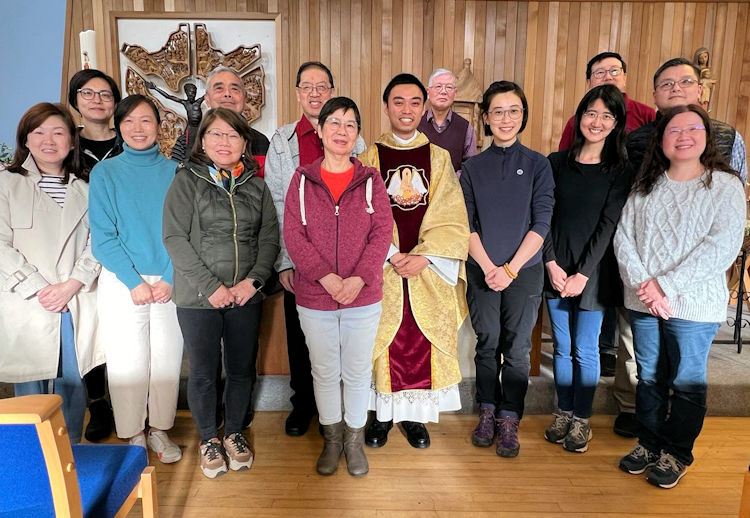Fr James prays at the Hill of Crosses for a broken world

Over 1,000 responses to Synodal Pathway survey
March 30, 2022
Radio Maria teenagers win audio award for innovation
April 1, 2022Fr James Caulfield, parish priest of Wisbech, met refugees from Ukraine when he recently visited the Hill of Crosses in Lithuania.
“I am praying for you at the Hill of Crosses,” he wrote on March 14 in a message to Bishop Alan Hopes. “I have also left broken rosaries from parishioners as a prayer of the broken world praying for peace and reconciliation.
“Daily I meet with refugees from Ukraine and am moved by the generosity of the people here. I know my own parishioners are also responding generously to the appeals for help. I pray that this sign of humanity will provide an avenue for resolution of the current conflict.”
Fr James went on to describe the setting and historical background of the Hill of Crosses. “This is a peaceful site in the middle of the countryside with nothing but a few farms nearby,” he wrote. “As you approach there is clearly visible a hill surmounted by crosses, thousands of them.”
Since the medieval period, the Hill of Crosses has represented the resistance of Lithuania to oppression. The original crosses were a form of Cenotaph to soldiers killed in battle who had no grave. The Lithuanians frequently struggled against the rule of the Russian Tzar and after a war against the Soviet Union in 1917 enjoyed a brief period of independence until the Second World War.
From 1944-1953 over half a million Lithuanians disappeared to Stalin’s Gulags in Siberia where thousands died, among them many priests and religious. An estimated 30,000 partisans were executed. As a way of remembering these people wooden crosses began to once again multiply on the Hill. The Soviet forces took flame throwers to the Hill and burned the crosses, which the people replaced by ones fashioned out of scrap metal or concrete. These too were cleared by the Soviets who bulldozed the site, but the crosses continued to return.
In 1990 when the Soviet Union collapsed the Hill of Crosses became a focal point of the liberated Lithuania to commemorate the lost and a place associated with the desire to live in peace. In 1993 St John Paul II gave thanks for the courage of the people of Lithuania and celebrated Mass at the Hill of Crosses.
“It has been my privilege to visit The Hill on two occasions,” writes Fr James. “Once officially in my former role as Principal Roman Catholic Chaplain to the RAF in March 2019 and this year privately. On this recent occasion I was mindful of the tragedy unfolding in Ukraine and the fear in Lithuania that if unchecked the Russians will return, and all the sacrifice symbolised by the thousands of crosses will once again be demanded of the people who have tried to rebuild their nation.
“As I stood in prayer and looked at the Hill, I took comfort from the realisation that Calvary was a place of death that became a place of hope and symbolises the eternal promise of God. Out of the current misery hope will emerge from the prayers for freedom.”
Pictured above is Fr James Caulfield at the Hill of Crosses and, below, the broken rosaries which he left there.





